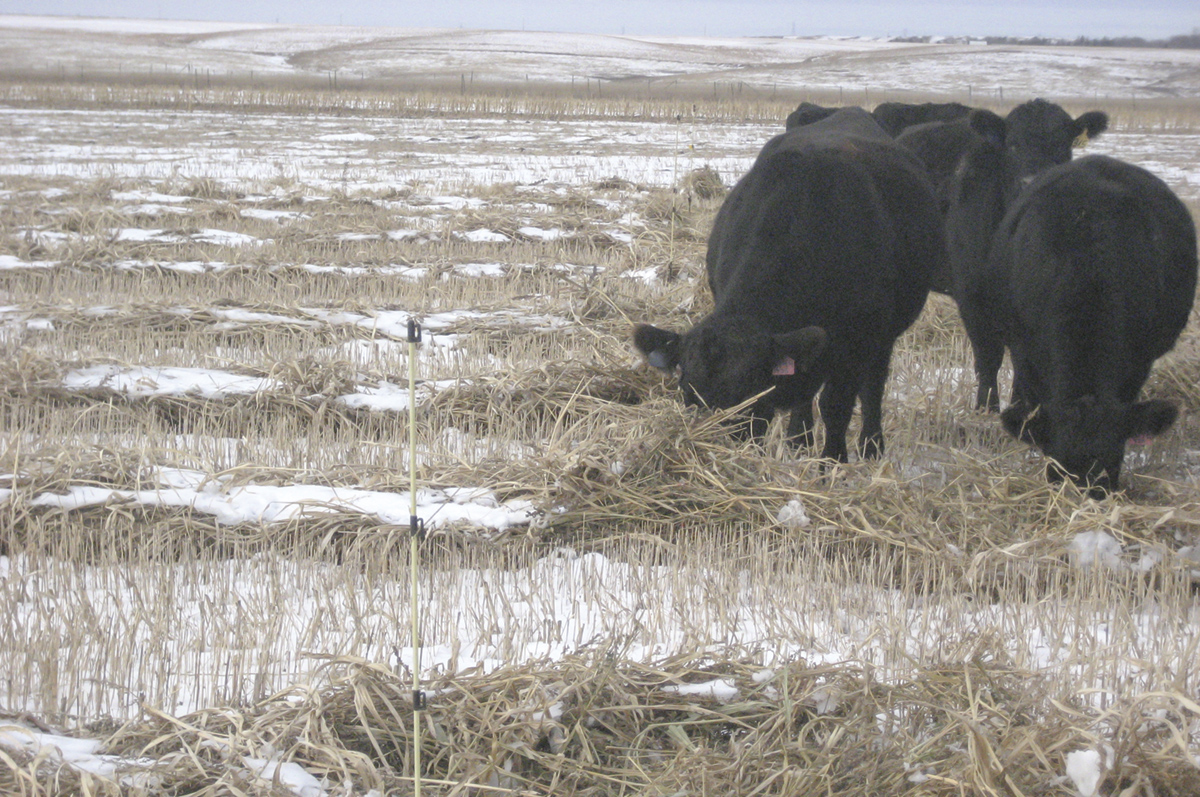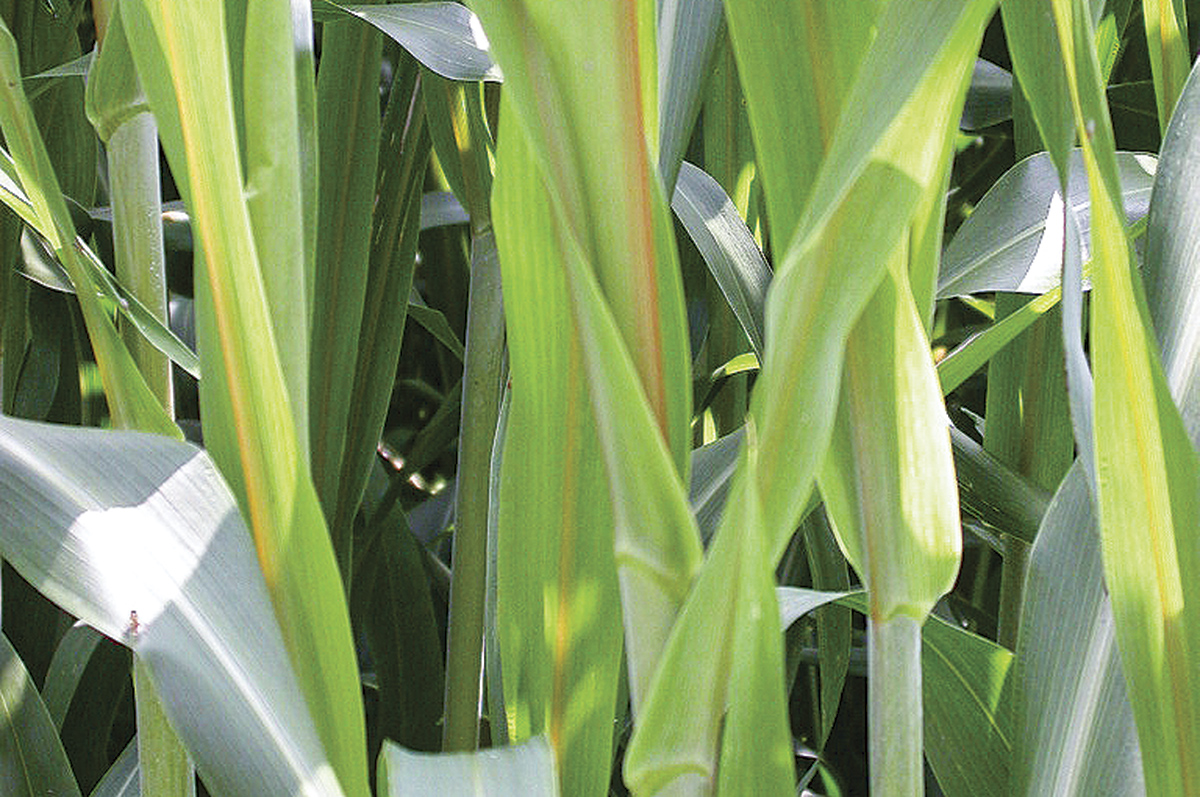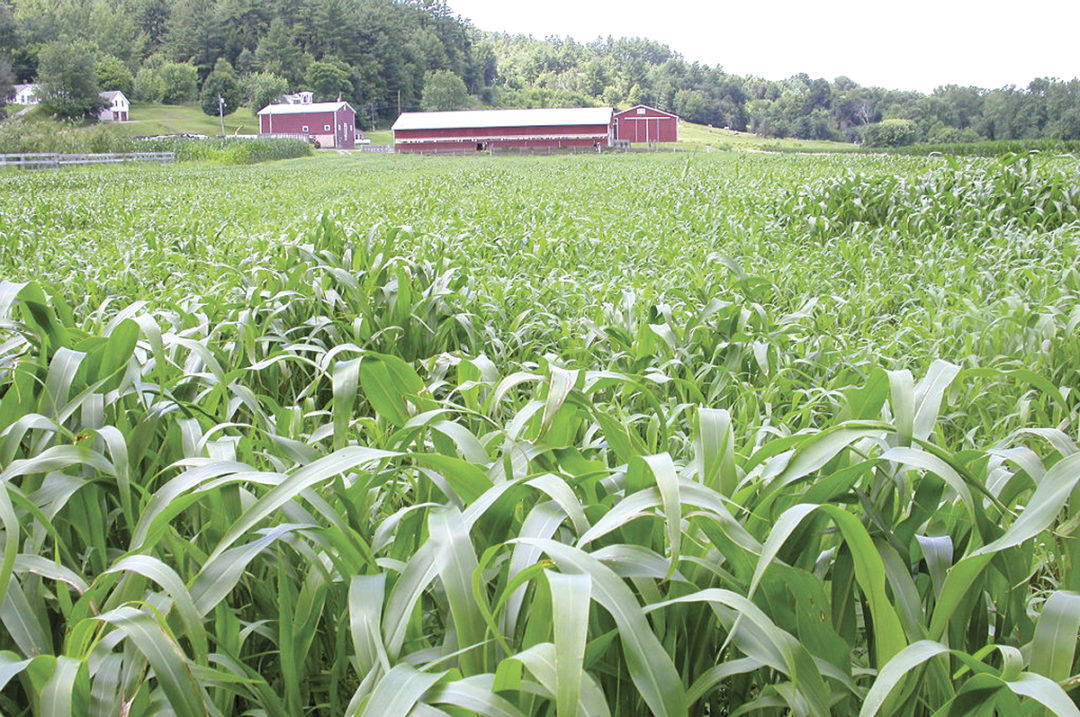Successful beef producers maximize available pasture. Planting annual forages is a time-tested way to increase yield per acre for a grazing herd of cattle. The variety of annual forages presents a dizzying array of choices, but sudangrass and sorghum-sudan hybrids stand above all other annual forages when it comes to high yields of nutritious forage that will lead to quick gains for graziers and their cattle. However, there are some things to watch out for before seeding these species.
Dr. Megan Van Emon, associate professor and a beef cattle specialist at Montana State University, says that sudangrass and sorghum-sudan hybrids are in the process of gaining traction for cattle producers. “It’s one of those forages people are learning about,” states Van Emon. “It’s a good opportunity for graziers.”
Unlike other common annual forages, both sudangrass and sorghum-sudan hybrids have the potential of killing cattle – the culprit is high levels of prussic acid. A form of cyanide, prussic acid can be deadly – it is most common for these forages to have dangerous levels of prussic acid when the plant is below 20 inches tall or immediately after a freeze or frost. Lush, green and short growths of these forages are also to be avoided.
When utilizing these potentially profitable forages, it is essential to err on the side of caution. Many producers test for prussic acid before turning animals out on sudangrass or sorghum-sudan. These forages generally contain less prussic acid when dried and baled. During the curing process, the cyanide turns into a gas and dissipates in most cases.
At times when the crop is hit by frost, Van Emon recommends that producers wait five to seven days before putting cattle back out in the field.
 Cattle graze sorghum-sudan that has been swathed. Photo provided by Megan Van Emon.
Cattle graze sorghum-sudan that has been swathed. Photo provided by Megan Van Emon.
“There was a producer a few counties over who had a problem with prussic acid last growing season,” says Van Emon. One key to helping that producer evaluate the danger of the forage was getting the crop tested in a timely manner. Because prussic acid is quite volatile, getting the forage to the testing lab in time to get an accurate result can be a problem.
In Montana, the opportunity for using sudangrass and sorghum-sudan hybrids is dependent on the moisture available. These crops will be a viable option for producers in relatively dry areas, such as eastern Montana, only if normal rainfall occurs by sometime in June.
Sudangrass originates in eastern Sudan and was introduced to the U.S. in the early 20th century. Today, it is grown as hay, silage, greenchop and for grazing. It is most common in the Southern states. Sorghum-sudan hybrids are a cross between the finer-stemmed sudangrasses and sorghum – which is taller and coarser and is used for syrup and grain production. The hybrids have higher yields but are more difficult to dry as hay. All can make productive pastures.
One advantage of these forages is that they are extremely heat- and drought-tolerant. Given dry and harsh conditions in various parts of the U.S. in recent years, more producers may be turning to sudangrass and sorghum-sudan as a grazing alternative.
If managed properly, sudangrass and sorghum-sudan hybrids can be grazed multiple times during the grazing season. The key is to leave at least 6 inches of forage on the ground to allow for regrowth.
Another issue is high levels of nitrates. Sudangrass and sorghum-sudan acquire levels of nitrates high enough to poison cattle after heavy nitrogen fertilizer application or after spreading large amounts of nitrogen-rich manure. Nitrate levels do not dissipate with drying – testing is the key to avoiding nitrate poisoning with these forages.
Carl Majewski, an extension agent with the University of New Hampshire, emphasizes that one key goal in grazing these crops is to get animals in to graze and then quickly get them out. “The idea is that you get your animals in and then get them out before there is any regrowth,” states Majewski. The fresh regrowth poses a higher risk of prussic acid poisoning. When grazing relatively tall plants so quickly, Majewski says, "You run the risk of trampling quite a bit." Although, that loss may somewhat be offset by the fact that the most stemmy, least nutritionally valuable parts of the plant would likely be the parts being trampled.
 This is a close-up of BMR sorghum-sudan hybrids grown in a 2013 hay trial. Photo provided by Carl Majewski.
This is a close-up of BMR sorghum-sudan hybrids grown in a 2013 hay trial. Photo provided by Carl Majewski.
As far as total protein, digestible protein and overall nutrients, sudangrass and sorghum-sudan hybrids “are just a notch higher” than most annual forages, according to Majewski. In hay trials in New Hampshire, Majewski planted a sorghum-sudan hybrid at the end of May, had a first cutting on the fourth of July, a second cutting that was 4 feet high three weeks later, and a third smaller cutting in mid-September. This demonstrates the high yield potential for this crop in a grazing system.
Majewski thinks that grazing sudangrass or sorghum-sudan could help producers diversify their forage production, especially in areas experiencing extreme weather. “I could see these warm-season annuals doing a better job in drought events,” says Majewski.
In many feeding systems, sorghum-sudan has been compared unfavorably to corn over the years. Dr. Luiz Ferraretto of the University of Wisconsin has done research on producing sorghum-sudan silage. He notes that recent research on more improved varieties of sorghum-sudan shows that sorghum-sudan may now have the edge on corn – as far as cattle nutrition goes. “Genetically, they have improved a lot,” says Ferraretto, speaking of the newer sorghum-sudan varieties. Those improved varieties would also deliver added benefits to grazing systems in many cases.
Although grazing sudangrass and sorghum-sudan hybrids have potential, extreme caution must be taken when grazing these crops. For all the advantages in yield and nutrition and resistance to drought, that advantage would be lost with one dead market-ready animal.









